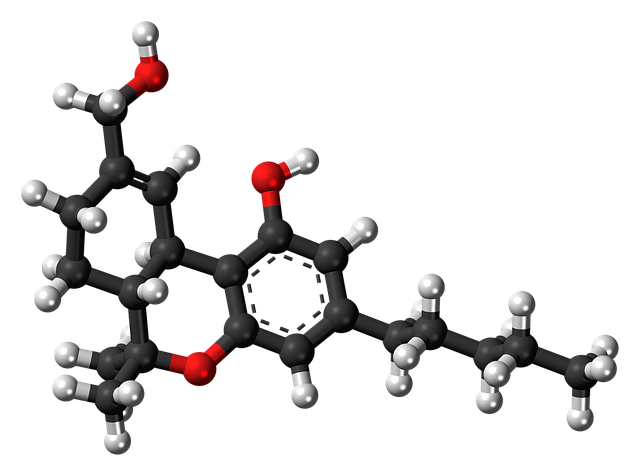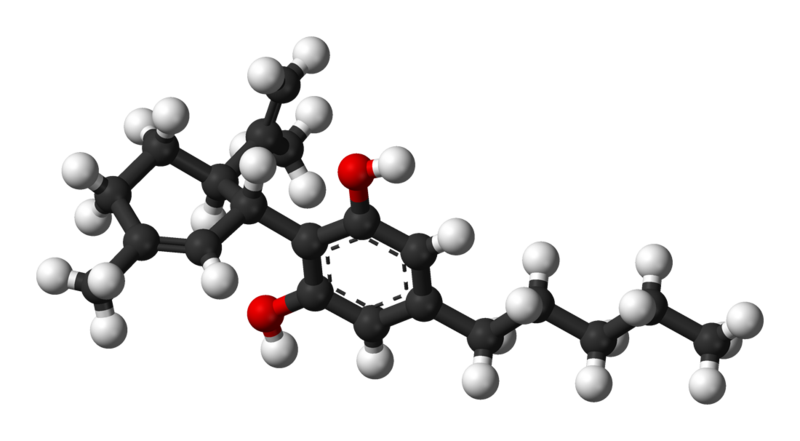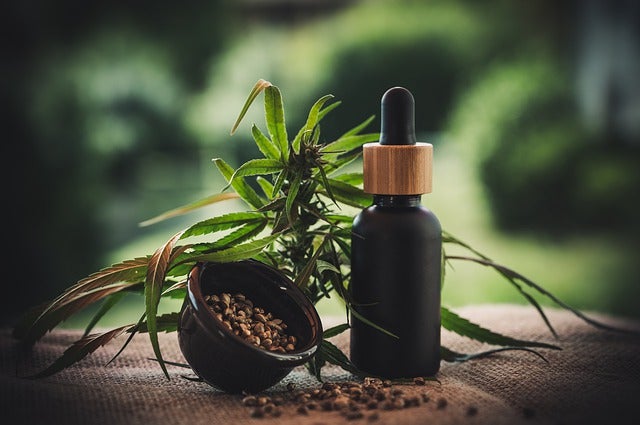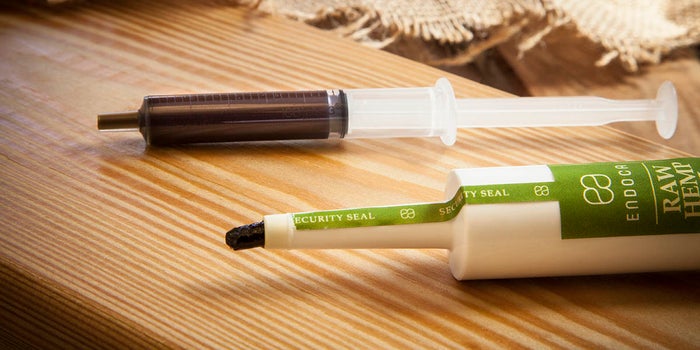Table of Contents
The two most important active ingredients in the cannabis plant are THC and CBD. They are responsible for the creative high or sense of ease users get as a result of cannabis consumption. Each strain has a different amount of THC and CBD, which growers can cultivate to produce specific effects.
For instance, sativa has lower doses of CBD and higher doses of THC than indica. As a result, sativa is known for giving people more energy as opposed to intense relaxation. Furthermore, hybrids mix and match the CBD and THC properties of their parents for custom blends.
Understanding the effects of THC and CBD will go a long way towards making your cannabis consumption experience as enjoyable as possible. You will be able to pick strains and hybrids that can, therefore, elicit the desired medicinal or recreational impact. Without further adieu, here is everything you need to know about THC and CBD.
What are Cannabinoids?
Cannabinoids are a fascinating group of chemical compounds found in the cannabis plant. These compounds are responsible for the wide range of effects that cannabis products can have on the human body. The two most well-known cannabinoids are delta-9-tetrahydrocannabinol (THC) and cannabidiol (CBD). THC is the compound that gives cannabis its psychoactive effects, creating the “high” that many users seek. On the other hand, CBD is celebrated for its potential therapeutic benefits without inducing any psychoactive effects.
But THC and CBD are just the tip of the iceberg. The cannabis plant produces over 100 different cannabinoids, each with its unique properties and potential benefits. Some of these lesser-known cannabinoids include cannabigerol (CBG), cannabinol (CBN), and tetrahydrocannabinolic acid (THCa). Each of these compounds interacts with the body in different ways, contributing to the overall effects of cannabis consumption.
Understanding cannabinoids is crucial for anyone looking to explore the benefits of cannabis, whether for recreational or medicinal purposes. By knowing how these compounds work, you can make more informed choices about which cannabis products are right for you.
The Cannabis Plant
The cannabis plant, also known as Cannabis sativa, is a remarkable and versatile flowering plant that has been cultivated for thousands of years. Native to Central Asia and the Indian subcontinent, the cannabis plant produces over 100 different cannabinoids, including the well-known CBD and THC. These cannabinoids are responsible for the wide range of effects that cannabis products can have on the human body, from therapeutic benefits to psychoactive effects.
The cannabis plant is dioecious, meaning it has separate male and female plants. The female plants are particularly prized because they produce the buds that contain the highest concentration of cannabinoids. In contrast, male plants produce pollen and are less commonly used in cannabis cultivation.
One of the reasons the cannabis plant is so popular is its adaptability. It can thrive in a variety of conditions, from indoor grow rooms to outdoor fields, and it is relatively easy to care for. This makes it an attractive option for both commercial growers and home cultivators.
Historically, the cannabis plant has been used for both medicinal and recreational purposes. Ancient civilizations, including the Chinese, Indians, and Greeks, recognized its therapeutic properties and used it to treat various ailments. In the United States, cannabis was widely used in the 19th and early 20th centuries before it was banned in the 1930s due to concerns about its psychoactive effects.
Today, the cannabis plant is experiencing a resurgence in popularity. It is being used to treat a range of medical conditions, including chronic pain, nausea, and epilepsy, and is also enjoyed recreationally for its relaxing and euphoric effects. As research continues to uncover the potential benefits of cannabinoids, the cannabis plant remains a subject of great interest and importance.
What Is THC in the Cannabis Plant?

THC stands for tetrahydrocannabinol. The psychoactive ingredient is commonly used to enhance the focus, euphoria, and creativity of the user. It is the chemical responsible for a majority of the psychological effects of cannabis.
While people around the world have used cannabis for these properties, THC only garnered scientific study in the 1960s. In 1964, chemists Raphael Mechoulam and Yechiel Gaoni isolated the cannabinoid. As a result, the duo was later able to create completely synthetic versions of the compound. THC is classified as a Schedule I controlled substance by the DEA due to its high potential for abuse.
The chemical is one of more than 100 cannabinoids in marijuana. THC is in the resin of the plant as well as its reproductive organs. Other chemical compounds include CBD, cannabigerol (CBG), Cannabinol (CBN), and 9-tetrahydrocannabinol acid (THCa), which have distinct properties and benefits.
THC works by attaching itself to cannabinoid receptors in the brain. These receptors are responsible for regions connected with memory, happiness, and time perception. When the THC locks with the end, it activates the receptor and therefore influences the associated senses.
One of the primary functions of THC is to stimulate the release of dopamine in the brain. This chemical is responsible for creating euphoria. Depending on whether you eat, smoke, or apply the THC, the effects can start immediately or within a few minutes and last several hours.
Sativa strains have higher levels of THC and lower levels of CBD compared to indica. Sativa flowers, such as Acapulco Gold and Supernatural, peak at 23 and 22 percent THC, respectively. Popular indica strains, like Afghan Kush and Super Silver Haze, are slightly lower at 21 and 16 percent.
People have used marijuana for medicinal purposes for as long as humanity has cultivated the plant. Healthcare providers will proscribe natural and synthetic forms of THC, depending on the ailments of the patient. One FDA-approved version is dronabinol. The drug helps mitigate nausea and vomiting that is brought on from cancer treatment and can stimulate appetite in people suffering from HIV, AIDS, or dementia. This use of THC is often referred to as medical marijuana, which is legal in various states but still classified as a Schedule I controlled substance.
Just because THC can be all-natural does not inherently make it a better option than traditional prescription pills. THC comes with its set of risks, like any drug. Because cannabinoid alters the functionality of the brain, it can impair a person’s ability to make memories as well as their motor skills. Therefore, the National Highway Traffic Safety Administration recommends waiting three hours after ingesting cannabis before driving.
It is also possible to overdose on THC. When people smoke marijuana, the THC is rapidly absorbed into the bloodstream, leading to almost immediate psychoactive effects. Edibles are a potentially problematic source because the body needs approximately half an hour to breakdown the food and cannabis, which delays the onset of the effects. People who do not feel the immediate head or body high may then be tempted to ingest more to increase the intensity.
What is CBD in the Cannabis Plant?

CBD stands for cannabidiol. The cannabinoid is a non-psychoactive compound in marijuana responsible for feelings of relaxation and sleepiness. It can also minimize the chance of seizures and provide relief from pain and anxiety. CBD is derived from the cannabis sativa plant, which produces both CBD and THC. Different varieties of the cannabis sativa plant contain varying levels of these cannabinoids, with legal differences between hemp and marijuana derived from the cannabis sativa plant.
CBD works in a parallel fashion to THC. The cannabinoids associates with specific receptors in the brain called CB1s and CB2s. These receptors are responsible for coordination, memory, thinking, and emotions as well as the immune system, respectively. The CBD actives these receptors, though, because it is not psychoactive, the compound will not alter a person’s state of mind.
One of the differences between CBD and THC is that CBD does not bond directly with the CB1 receptor. It can even negate a connection between the receptor and THC. If that negation happens, the CBD can neutralize the psychoactive effects.
Like THC, people have used CBD for recreational and medicinal purposes for millennia. It wasn’t until 1940 that we isolated the compound. Chemist and Harvard graduate Roger Adams isolated CBD from sativa and six years later, though at the time, he did not understand the magnitude of his discovery.
Six years later, scientists began using CBD in clinical tests on lab animals while Raphael Mechoulman identified the three-dimensional structure of the compound. Mechoulman is often credited as the discoverer of CBD. One of the breakthroughs for the drug was in 1980 when Mechoulman found that CBD could treat epilepsy.
Today, CBD is everywhere. CBD supplements and products are available in all 50 states, and people can get it in lotions, pills, foods, oils, and water. Athletes and medical patients often use the compound to heal their body after workouts or illnesses.
Many people who have mental illness use CBD as a form of treatment. It can assist in calming people down and alleviating stress and anxiety associated with their condition. Some individuals use CBD as a replacement for painkillers because of the enhanced benefits and minimal side effects. Other treatments include CBD for Alzheimer’s, acne, diabetes, cancer, and neurological diseases.
As mentioned above, indica has higher levels of CBD than sativa strains. For instance, Afghan Kush and Maui Maui are 6 and 0.55 percent CBD, respectively, while sativa strains like LA Confidential and Acapulco Gold are below 0.3 percent. The higher potency makes the side effects of CBD-forward strains better for treating pain, insomnia, and inflammation.
While CBD has a substantial number of benefits, it also comes with potential drawbacks. Minor health concerns may include diarrhea, dizziness, drowsiness, and dry mouth. The American Academy of Pediatrics also does not recommend that pregnant women use CBD.
The Endocannabinoid System
The endocannabinoid system (ECS) is a complex network within the human body that plays a pivotal role in maintaining various physiological processes. Think of it as a balancing act, ensuring that functions like mood, memory, sleep, and appetite are all in harmony. The ECS is composed of natural molecules known as endocannabinoids and the pathways they interact with.
At the heart of the ECS are two main types of cannabinoid receptors: CB1 and CB2. CB1 receptors are primarily found in the central nervous system, including the brain, and are responsible for regulating functions like memory, mood, and pain perception. CB2 receptors, on the other hand, are more commonly found in peripheral tissues and are involved in managing inflammation and immune responses.
When cannabinoids from the cannabis plant, such as THC and CBD, enter the body, they interact with these receptors, influencing various physiological processes. For instance, THC binds directly to CB1 receptors, leading to its psychoactive effects. CBD, however, interacts differently, often modulating the effects of other cannabinoids and providing therapeutic benefits without altering the state of mind.
Understanding the ECS is key to appreciating how cannabis can be used to support overall well-being. Whether you’re looking to manage pain, reduce inflammation, or simply improve your mood, the ECS is at the core of how cannabis exerts its effects.
Effects of Cannabinoids
Cannabinoids produce their effects by interacting with specific receptors in the central nervous system. The type of cannabinoid, the dose, and an individual’s sensitivity all play a role in determining the effects experienced. THC, the primary psychoactive compound in cannabis, can produce feelings of euphoria, relaxation, and altered perception. This is why many people use THC-rich strains for recreational purposes, seeking that characteristic “high.”
On the flip side, CBD offers a different set of benefits. Known for its potential therapeutic properties, CBD can help reduce anxiety, alleviate inflammation, and even provide pain relief—all without the psychoactive effects associated with THC. This makes CBD an attractive option for those looking to reap the benefits of cannabis without the high.
The method of consumption also significantly impacts the effects of cannabinoids. Smoking cannabis, for instance, delivers cannabinoids directly into the bloodstream through the lungs, resulting in almost immediate effects. Edible cannabis products, however, need to be digested first, which means the effects take longer to kick in but can last much longer.
Understanding how cannabinoids work and the various ways they can be consumed allows users to tailor their cannabis experience to their specific needs and preferences. Whether you’re looking for quick relief or long-lasting effects, there’s a method and a cannabinoid profile that can meet your needs.
Risks and Side Effects
While the cannabis plant offers numerous potential benefits, it is essential to be aware of the risks and side effects associated with its use. One of the primary concerns is the psychoactive effects of THC, which can include feelings of euphoria, relaxation, and altered perception. While these effects are often sought after for recreational use, they can also lead to negative experiences such as anxiety, paranoia, and even psychosis in some individuals.
Smoking cannabis, in particular, poses several health risks. Inhaling smoke can lead to respiratory issues, such as bronchitis and lung infections. Additionally, smoking cannabis has been linked to cardiovascular problems, including an increased risk of heart attack and stroke. These risks are particularly concerning for individuals with pre-existing health conditions.
Cannabis use can also impact mental health. Some users may experience depression, anxiety, or psychosis, especially if they have a predisposition to these conditions. The relationship between cannabis and mental health is complex and can be influenced by factors such as genetics, frequency of use, and the potency of the cannabis consumed.
Cognitive function is another area where cannabis use can have negative effects. Studies have shown that cannabis can impair memory, attention, and decision-making abilities, particularly in young people whose brains are still developing. This can affect academic and professional performance, making it crucial for users to be mindful of their consumption habits.
In summary, while the cannabis plant has many potential benefits, it is important to approach its use with caution and awareness of the associated risks. Understanding these risks can help users make informed decisions and minimize potential negative effects.
Medical Cannabis Laws and Regulations in Canada
CBD vs. THC: Which Should I Choose?

Before choosing between CBD and THC, it is essential to know what your intentions and goals are. Each cannabinoid has unique properties that create vastly different results. For instance, it would not make sense to vape CBD oils if you want to spur creativity and energy levels.
Also, it is worth noting that CBD and THC are not options where you pick one or the other. (The exception is CBD products like oils, pills, foods, beverages, and topicals.) Indica, sativa, and hybrids have various levels of the two compounds. Knowing the effects and benefits of each can help you select a strain that leans towards one or the other or strikes a balance.
CBD is better suited for therapeutic purposes. That can mean treating stress, anxiety, and depression in addition to physical ailments. Researchers have documented patients with multiple sclerosis using CBD to improve their ability to walk without muscle spasms or pain.
Other therapeutic benefits included improvement of general well being. One study linked CBD with reducing heart conditions, such as stroke and heart attacks. Additional studies have shown a link between CBD and improved sleep and quality of life for people who have Parkinson’s disease.
It is important to note that some CBD products may contain trace amounts of THC, which could potentially lead to failing a drug test.
The form of ingestion of the CBD matters too. Smoking, vaping, and other forms of oral ingestion are the fastest ways to experience the effects. Topicals and edibles are slower to act because the body needs more time to absorb and process the CBD but provide more potent results.
THC is often associated with recreational use because the psychoactive properties provide a “head high.” People that ingest THC-centric strains of cannabis, like sativa, find they have more energy and creativity. These benefits make it ideal for daytime use.
While CBD is arguably more well known for its medicinal purposes, THC has health benefits too. Studies have shown it can treat symptoms related to inflammation, nausea, chemotherapy, and digestive health. However, the cognitive impairment associated with THC is a side effect some users may wish to avoid.
Conclusion on THC and CBD in Cannabis
CBD and THC are essential components of cannabis. While cannabinoids interact with receptors in the brain in similar ways, the two compounds have different effects. CBD provides a mellow and relaxed feeling while THC offers a creative and energetic high.
Remember, every strain of marijuana comes with CBD and THC. Whether you opt for indica, sativa, or hybrids will change the respectively level of each cannabinoid. The exception to the rule is if you select pills, tinctures, or topicals that have CBD infused into them.
Understanding the benefits and potential side effects of each cannabinoid will shape your use and enjoyment of cannabis products. CBD and THC are central to experience whether you choose to eat, drink, smoke, or apply cannabis. If you have additional questions about which strains or products are right for you, feel free to contact your health care provider or our mail order dispensary.




Recent Comments